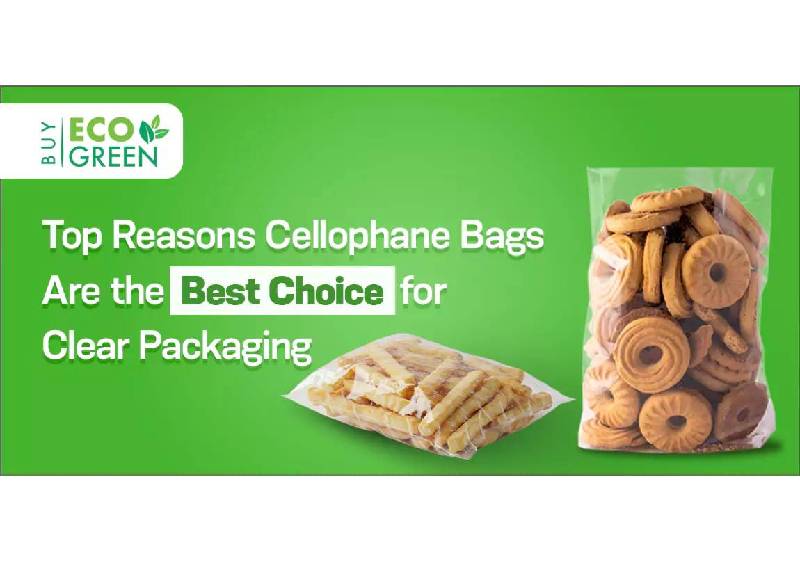


Choose cellophane bags for clear, compostable packaging. Perfect for food, retail or e-commerce. Order online from Buyecogreen today.
Clear packaging plays a crucial role in how a product is seen and received—especially in retail, food service, and e-commerce. While plastic has long dominated the packaging space, more businesses are now switching to alternatives that look just as good but are kinder to the environment. Among these, cellophane bags offer a rare combination of clarity, strength, and sustainability.
At Buyecogreen, we believe that packaging should never come at the planet’s expense. This article explores why cellophane packaging has become a top choice for Australian businesses seeking eco-friendly clear packaging solutions—and what makes it a better option than traditional plastic bags.
Cellophane is a transparent, plant-based film made from regenerated cellulose—typically sourced from wood pulp. Unlike plastic, which is derived from petroleum, cellophane is biodegradable and compostable under the right conditions.
It was first developed in the early 1900s and is still used today because it offers excellent clarity, a smooth texture, and strong resistance to air, grease, and moisture. These features make cellophane bags especially suitable for food packaging, retail display, and gift wrapping—delivering both protection and presentation.
When disposed of correctly, certified compostable cellophane breaks down within weeks, leaving no harmful residue behind. This makes it one of the few truly sustainable packaging options that meet modern environmental standards while still offering professional presentation.
Cellophane stands out as a more innovative, more sustainable alternative to plastic. While both materials offer transparency and flexibility, the key difference lies in their environmental impact. Plastic is petroleum-based, takes hundreds of years to break down, and contributes significantly to landfill and marine pollution.
Cellophane, by contrast, is made from natural materials like wood pulp. It’s biodegradable and compostable, meaning it can break down within weeks in industrial composting conditions—without leaving behind microplastics or toxic residue.
Beyond its environmental advantages, cellophane packaging is naturally breathable, which makes it ideal for baked goods and other moisture-sensitive items. It also seals well using heat or adhesives, and holds its shape without becoming brittle or discoloured.
At Buyecogreen, we recommend cellophane not only for its practical qualities but also because it reflects a brand’s commitment to eco-friendly clear packaging solutions—a value more and more consumers actively look for.
When comparing cellophane and plastic, the better choice depends on your priorities. If clarity, flexibility, and low cost are your only concerns, plastic may seem appealing. But when sustainability and disposal impact matter—as they increasingly do for modern businesses—cellophane bags are the better option.
Cellophane is compostable and breaks down naturally in suitable conditions, making it far less harmful to the environment. Plastic, on the other hand, can take centuries to degrade and often contributes to long-term pollution.
For packaging that needs both performance and presentation, cellophane packaging offers a clean, glossy finish that rivals plastic—without the environmental cost. It’s strong enough for product protection yet light and thin for efficient packing and shipping. And importantly, it aligns with a growing demand for sustainable packaging options.
When quality and environmental responsibility are both non-negotiable, cellophane outperforms plastic every time.
Know more https://www.buyecogreen.com.au/cellophane-bags-clear-packaging-guide/
